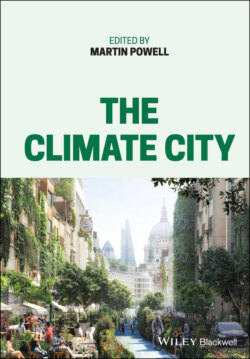Читать книгу The Climate City - Группа авторов - Страница 28
“Paris-Agreement-Compliant”: What Does This Mean?
ОглавлениеMany cities may approach the idea of reducing to zero emissions and conclude that with best efforts and all available technology they will not be able to get there on their own. There will be an emissions gap. This gap may be a hard-to-abate industrial sector within the city’s boundary or it may just be the need to be connected to a grid that is not on a zero-carbon trajectory and lies outside the city’s sphere of control.
As with leaders in the corporate world, these municipal leaders may conclude the need to purchase carbon credits, or invest in negative emissions technologies, in order to offset the emissions that they cannot reduce on their own account. These outside-entity investments can help us all along the journey to a net-zero world if they are tied to the global carbon budget. To achieve this, the unit of carbon credit supply needs to be counted in the appropriate nation’s single, unified GHG inventory. Only then will the credit be netted against the nation’s other carbon sources (e.g. logging and carbon-emitting factories) and sinks (e.g. forest preservation, afforestation); and only then will there be a unified picture of reality at the global level. Most organizations fund these sinks, though, by purchasing carbon credits in a flawed marketplace. Subnational, project-based carbon credits may often have a variety of real-world benefits but fall short from the point of view of atmospheric integrity because they do not form part of the relevant nation’s GHG inventory.
However, encouraging directions announced at COP25 – for example, by REDD.plus – point to some fixes on the horizon.25 Powered by the Coalition for Rainforest Nations, this platform will be making United Nations Framework Convention on Climate Change (UNFCCC)-registered REDD+ forest carbon credits issued by nations under the Paris Agreement, and these will be made available to subnational and private actors such as cities to purchase for the first time. This could trigger a significant, voluntary transfer of capital from wealthier, industrial cities to developing countries to reduce deforestation and encourage forest preservation. Under any global scenario that gets the world to 1.5oC, McKinsey point out in their “Climate math” report that a minimum 77% of deforestation’s current emissions need to be abated by 2030.26 This level of reduction will need to be funded by those who can afford it and who cannot necessarily get to “Net-Zero” without purchasing offsets.
Different approaches to financing the emissions gap will affect countries’ nationally determined contributions in different ways. Instead of purchasing carbon credits, a city could create quantifiable projects themselves (think urban tree plantings within the city boundary) or investments in negative emissions technologies, to remove carbon dioxide from the air. While these emissions-reduction activities could appeal to that city more than purchasing carbon credits – especially as the former has many spillover community benefits – they might not be captured in the relevant nation’s nationally determined contribution as part of the Paris Agreement, and therefore would not contribute to global carbon budget accounting. For a city to be liveable and also truly “Net-Zero” under the definition of the Paris Agreement, I would encourage a blend of the two approaches: creating and funding high-quality, verifiable in-boundary (“on-site”) credits and blending that with UNFCCC-registered credits that are part of the global carbon budget and transfer funds to the countries and communities to abate the vast majority of deforestation emissions within the decade, while avoiding the purchase of non-Paris-Agreement-compliant outside-boundary carbon credits. Most importantly, the city should say explicitly to what extent it is relying on carbon credits and external investments, to what standards these credits are verified, and to what extent its actions affect a relevant nationally determined contribution.
